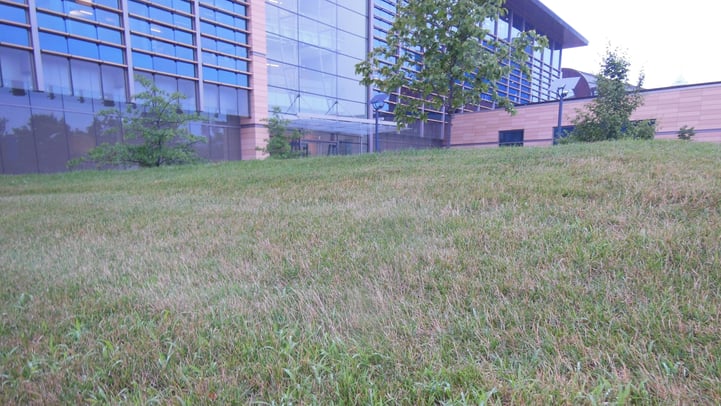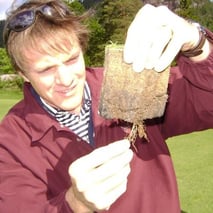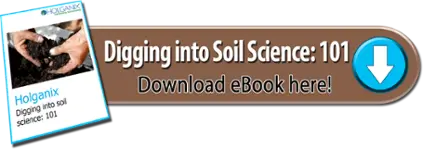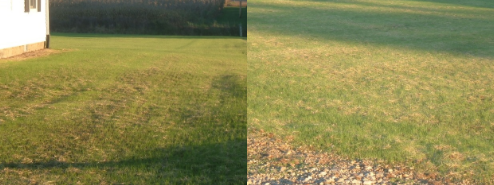7.5 Things You Can Do To Keep Your Turf Healthy During Summer and Beyond
By Cale A. Bigelow - Professor, Turf Science Purdue University

*This is a special guest blog post by Professor Cale A. Bigelow
First, the “fine-print” this article is oriented toward managing the cool-season turf species in summer which means time for prevent defense. If you are managing warm-season species some information will still apply but… for you it’s more time to rock and roll!
We are now a few weeks into summer and many lawn turf areas are starting to rapidly change appearance, density, what were minor insect and disease pest issues in the spring are now more pronounced.
Many people have questions about what they should/should not do. Hopefully this list will give you some food for thought on best management strategies.
1. The growing environment
Pay attention to the growing environment and adjust management and inputs accordingly.
- Full sun: Water and feed appropriately. Also scout for more weed pests.
- Shade: Be very cautious, don’t overwater and scout for disease pests.
- The soil environment. Summer is a great time to get a sense for if there are limiting factors affecting rooting. Turf is often planted and grown on less than ideal soils, sometimes containing buried construction debris, etc. When drought conditions occur these areas can be quite obvious. That is the time to document these, perhaps with images for future projects that might help the plant in the future.
2. Turf species
What is the dominant desired grass? Know the species you are managing, what are its strengths and weaknesses.
Also remember, cultivar selection matters too! There is a big difference between Kentucky-31 tall fescue and some of the new “turf-type” tall fescues like 4th Millennium, Regenerate, RTF, etc.
The important part of this is that not all turf species are adapted to all growing environments. The fescues tend to be a bit more tolerant of difficult environments compared to Kentucky bluegrass. In some situations a mixture of species is appropriate. I could go on with this but I will save it for a future blog post.

3. Mowing
This is the time of year that some people will sometimes raise their mowing heights. While this is not a bad strategy, it is also not always practical for everyone.
In general I suggest at 3” mowing height for most cool-season turf properties and maintain this cutting height throughout the growing season. Of course there are exceptions, but more leaf surface area normally means deeper rooting.
Realize at this time of the year the plant is not normally growing many new roots so DO NOT SCALP THE TURF!!!
Probably the biggest mistake that I see in summer related to mowing is from “mechanical damage”. That is, where someone was not paying attention and attempts to mow stressed turf areas. This may include mowing turf when it is too wet or too dry. It may also include things like damage in turning areas. How many times have you seen the “mower doughnut” around trees or other obstacles? This damage is more likely occur during summer and often it rarely fully recovers. When in doubt, skip a mowing… The turf might thank you later.
4. Supplemental irrigation
Water is necessary for plant survival, but I have seen more problems with issues from overwatering in the summer compared to where the turf is allowed to go dormant. Daily, light irrigation is not the way to manage any turf area. Allow at least one drying day between cycles to let the water drain into the soil and soil gases like oxygen to exchange.
5. Feeding/fertilizer inputs
During the summer months the turf plant often starts to lose some of its green color and is very vulnerable to numerous stresses.
In order to maintain green color, cope with stress and recover from stress events the plant needs at least “some” nutrition.
The risk, however, is that many think if some fertilizer is good a whole lot will be even better. Based on this attitude, turf specialists have often suggested little to no fertilizer should be applied in summer to many home lawns. Part of the reality this recommendation has been targeted toward homeowners in an effort to save them from their good intentions. There simply is too much risk for them to over fertilize and cause unintended consequences.
For professionals, however, it is okay to stimulate and encourage “some” growth. Feeding should be done with only light rates (e.g. 0.3-0.5 # of actual N/1000 ft2 to actively growing turf using primarily slow/controlled release N sources). Save the larger applications (e.g. > 0.5 # N) for the Sept.-early Nov. time period when the turf can really use this nutrient and produce and store those much-needed carbohydrates.
An exception, however, can be made where turf managers are using a liquid feeding program for their turf. In these programs, very light rates of nitrogen (e.g. 0.1-0.25 # of actual N/1000 ft2 from soluble N sources like urea) can be applied in combination with micronutrients like iron and even some of the plant supplements (e.g. biological/probiotic products like Holganix concentrate). Some turf managers will apply this liquid solution every 14-28 days to high value properties. This result of this regular very gentle feeding program in the summer work very well in terms of maintaining summer color, shoot density, and vigor without the potential for undesirable growth.
6. Pest monitoring
Insects and disease issues seem to be most commonly expressed during the summer months. This is particularly true if the turf is under a lot of heat/drought stress and lacks vigor or is malnourished.
Summer diseases are common on most turf areas and can range from dollar spot (relatively easy to manage with proper nutrition) to the dreaded summer patch (this one is mean!) that occurs on Kentucky bluegrass.
In general a dense, healthy, actively growing turf is less susceptible to disease pests.
As far as insects, the most common issue is white grubs, but numerous other pests like chinch bugs or sod webworms can also cause damage.
Again, actively growing turf will experience fewer damaging problems, but scouting and an awareness of prevailing weather conditions can help manage these pests.
7. A late-summer/fall cultural program
Before summer stress begins to decrease you should have already thought about what will you will be doing to make the turf as healthy as possible for next year? The adage, plan your work and work your plan applies here. But remember it’s also not a one-size-fits-all program.
Hopefully your program includes a balanced feeding program (normally 2-4 moderate fertilizer applications are scheduled). Soil cultivation like aerification in the middle of autumn (e.g. October) and maybe some overseeding/interseeding (see #2) into thin or stressed turf areas.
If you plan to seed, normally by the early part of August throughout much of the United States it is safe to start introducing seed into thin areas. An early start is particularly important for slow to established species like Kentucky bluegrass.
If seeding is part of your plan, remember that better seed=better turf and seed-soil contact is essential for successful establishment. You can’t just spread seed on the hard, compacted soil in mid-August and expect success. Additionally, late-summer seeding can be challenging because of the potential for lingering summer annual weeds and also the potential for diseases like brown patch or pythium blight to injure seedlings.
Good water management and access to plant protectants/fungicides in the event of disease will be necessary to help the seedlings establish.
7.5 Expectations
Remember we are managing a biological system. Just like us, these plants do sometimes have a “bad-hair” day. Hopefully you and your clients have somewhat realistic expectations. If you communicate well, people generally will understand. It’s when surprises occur that people get upset.
In some situations, if you have exhausted all your management skills it may be time to revisit #7 and consider a more adapted species or newer cultivar. There is no failure in replanting to a turf that is more adapted to the growing environment and more sustainable to manage.
Want to learn more about summer turf management?
Want to dig deeper into summer turf management and fall recovery? Awesome! Dr. Cale Bigelow will be hosting a webinar on July 14 on surviving the dog days of summer! Be sure to save your seat! Our attendee count is limited to 100 people!

 About the Author:
About the Author:
Cale A. Bigelow Ph.D. is a Professor in the Horticulture and Landscape Architecture Department at Purdue University. He is heavily involved in undergraduate instruction for the Turf Science discipline and has an active research program investigating turf species, nutritional programs, water use and ways to more sustainably manage ornamental and recreational turf areas. Follow him “On the Twitter” @BIGTurfTeaching
Image caption(s):
During the summer it is not uncommon for cool-season turf areas to start to decline in terms of appearance. Loss of green color, density and the presence of pests like coarse-textures annual grassy weeds such as crabgrass and diseases like dollar spot are not uncommon. It’s important to have a “turf health” plan and a sound nutritional strategy/program should be a major part of that plan.

 |
July 8, 2016
|
10:30 AM
|
July 8, 2016
|
10:30 AM
-2.jpg)
-1.jpg)
-1.jpg)
-1.jpg)
.jpg)

-2.jpg)
-1.jpg)
-1.jpg)
-1.jpg)
.jpg)







 About the Author:
About the Author:
.webp)
-1%20(1).webp)
-831535-2.webp)



.png)

.png)